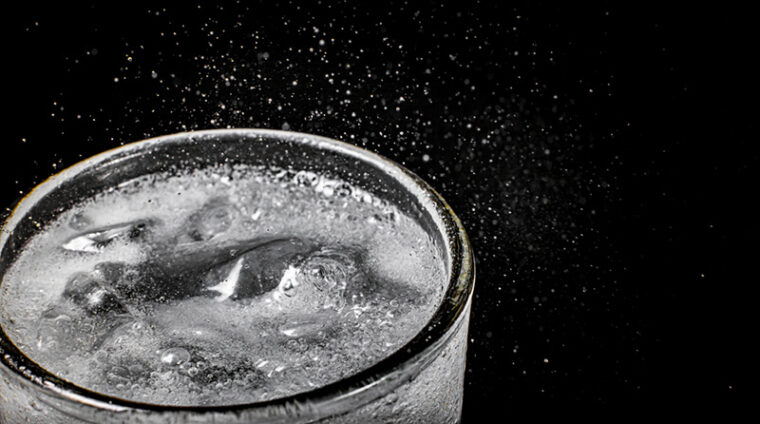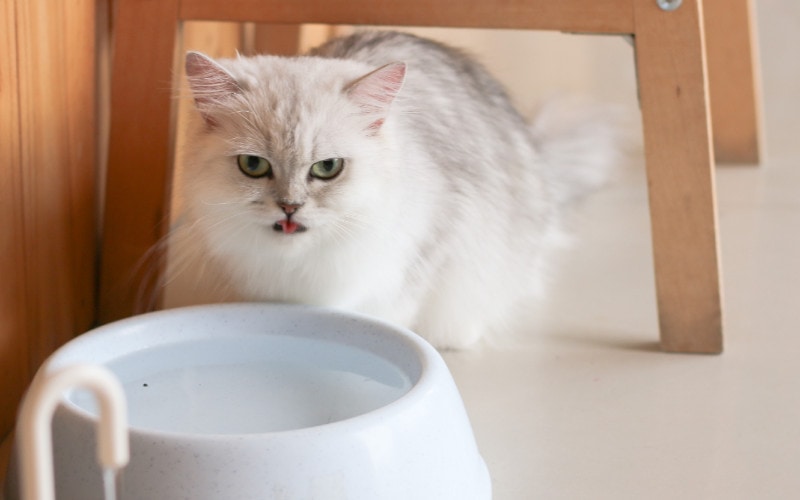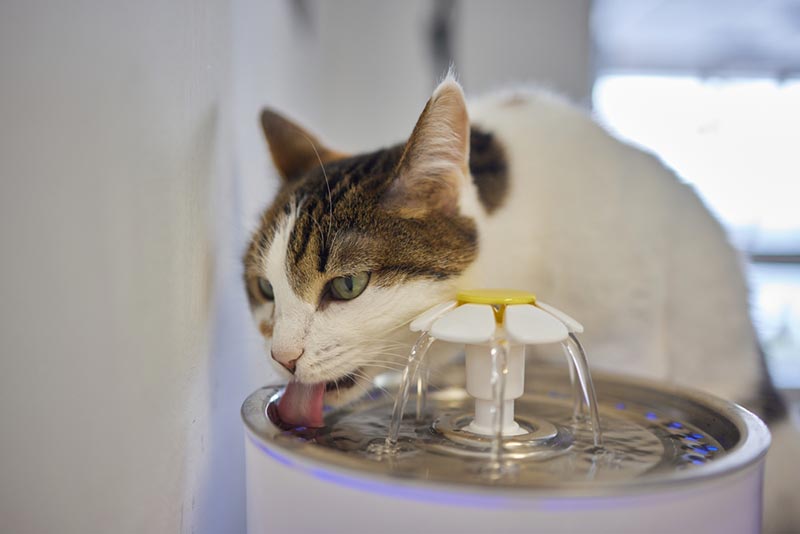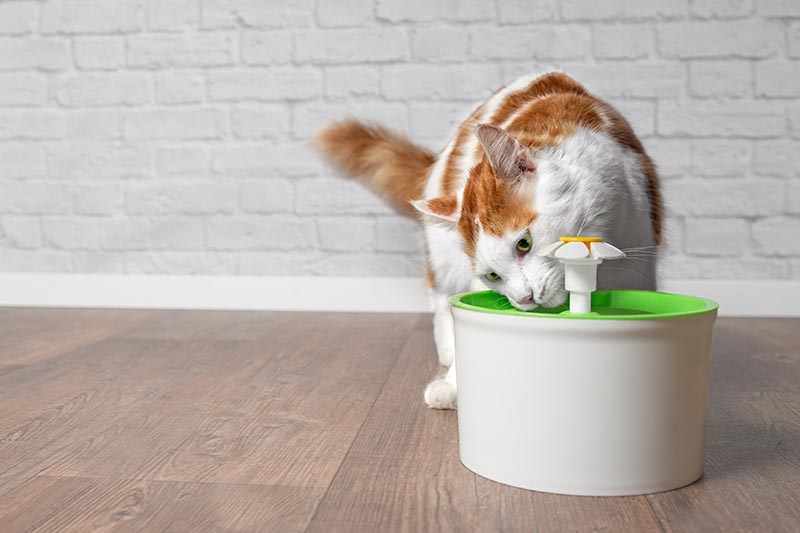
If your cat has ever sauntered over to your glass of sparkling water and helped themselves to a sniff and a sip, you may be wondering if intervention is called for. Can cats drink sparkling water? And if so, is it good for them?
Cats can drink plain, unflavored sparkling water occasionally. However, too much carbonation isn’t great for cats, or people, and it can often lead to tummy issues such as gas and bloating. While sparking water may be a fun occasional treat for some cats, others may find the fizziness annoying.

How Much Water Should Cats Consume Daily?
Most cats need to consume about 1 cup of water per 10 pounds (25ml or 0.88 fl. oz per pound) of weight every day. However, the amount a cat needs to drink depends on factors such as their diet and overall health. If you’re concerned about your cat’s fluid intake, consider measuring the water in their bowl first thing in the morning and again at night to estimate how much they’re consuming. Cats that primarily eat kibble often have higher fluid intake requirements since they’re not getting any hydration from their food. Dry food typically has 12% to 14% moisture, but the moisture level of wet food is 70% to 80%

What Happens if Cats Don’t Drink Enough Water?
Cats need to stay properly hydrated to ensure their bodies work efficiently. Water is essential for all bodily functions; no water = no movement of blood = no movement of oxygen = death.
Not drinking enough can lead to dehydration, which can have serious health consequences, including heart problems and organ difficulties. Common signs of dehydration in cats include dry gums, lethargy, constipation, decreased skin elasticity, and lack of interest in food. Extremely dehydrated cats often appear to have sunken eyes. The trouble with dehydration is that, past a certain point, the one thing a cat needs to do is drink, and it is also the last thing they want to do.
What Are Some Common Causes of Dehydration?
Cats can become dehydrated for a number of reasons, some easily rectified, while others are more worrying. They include:

The 5 Ways to Encourage Cats to Consume More Water
If you’re worried that your cat isn’t getting enough to drink, there are a few steps you can take that may get things moving in the right direction, without having to resort to serving them Evian Sparkling!
1. Select the Right Bowl
Many cats have preferences regarding the material from which their bowl is made. Plastic bowls can absorb germs over time, which sometimes alters the water’s taste to the point that it becomes unpleasant to cats. Ceramic or stainless steel bowls are sturdier, stay cleaner, and keep water cooler.
Because cats have such sensitive whiskers, many prefer to drink from wide bowls so their whiskers don’t touch the sides. Water bowls should be regularly washed with soap and hot water to prevent germs from accumulating. Dishwasher-safe options make keeping your buddy’s water bowl simple.
2. Buy a Cat Fountain

Some cats prefer to drink running water; flowing water in nature is cleaner than water in standing puddles. Cats that drink from a dripping faucet often love sipping from fountains, which may encourage them to drink more. Most fountains have filtration and/or cooling systems that keep your cat’s water tasting cool, clean and fresh throughout the day.
3. Increase the Amount of Wet Food
Wet food contains plenty of water, and most cats enjoy digging into tasty pâtés and chunky dishes with gravy. Increasing the amount of wet food your cat eats is a simple way to introduce more water to their diet. Make sure to adjust how much kibble your pet gets if you give them more wet food to keep them from gaining weight.
4. Buy Several Bowls
Multi-cat households require multiple options when it comes to basics such as litter boxes as well as food and water bowls. Cats generally don’t like to share food and water bowls. So, to keep the peace, consider having at least one dining set up plus one per cat. If you have two cats, at least three water bowls should be available to minimize conflict and ensure that your companions always have free access to at least one water source. Consider placing the bowls in several locations around your home; only good things come from giving cats more places to head for a sip.
5. Pick the Right Place

Many cats don’t like eating and drinking in the same place. Placing your cat’s food and water bowls in separate areas may encourage them to drink more water. Because cats have such strong senses of smell, keeping litter boxes and water bowls apart is also a good idea. Cats often relax and drink more freely in quiet areas where they feel secure and know they won’t be surprised or disturbed.

Conclusion
While it’s fine for cats to have an occasional sip of seltzer water, there’s little reason to allow them to consume carbonated water regularly. Cats that consume too much can experience gas and bloating. Plain, unsweetened sparkling water is safest since it doesn’t contain chemicals or artificial sweeteners that aren’t healthy for cats, but if you ensure your cat has a selection of appropriate water bowls in appropriate places, they’ll be sure to stick to their own supply.
See also:
Featured Image Credit: Nitiphonphat,Shutterstock






